Brute Force CaseMod – ATX board, MicroATX case
This week I've been playing with the thought of building myself a little headless system for some number crunching or server duty. I've looked around my collected computer garbage and happened to have all the necessary parts at hand: case, power supply, board with RAM, CPU plus cooler, SSD, even a passive cooled PCI-E graphics card for the initial setup. Everything fine so far, were it not for a little 'mismatch'. The mainboard was a Gigabyte GA-EP45-UD3 in full ATX form factor, but the case was only able to house smaller boards of the Mini or Micro-ATX form factor.
Not wanting to wait for a new case (and not wanting to shell out any money for a new case...), there was only one thing to be done: get out the angle grinder and cut the board to fit! Who needs those old PCI slots, anyway? Well, I rather cut some new openings in the case and re-aligned the board to make it fit.
The first idea was to remove the PSU and move the board up to the top of the case. That would have retained the original alignment together with the functionality of the slots at the back, but re-fitting the PSU afterwards seemed to be quite a pain in the ass and I'd have to cut away parts of the 5,25″ cage for the optical drives. The other idea was to leave everything in place as it is and simply rotate the board. That way it fit in there nicely and I just had to make some additional holes on the underside of the case to regain access to the connectors. I could even re-use one of the threaded holes for the mounting studs! Of course there's nothing to screw the PCI cards to now, but since the graphics card is only needed for initial setup and everything else is on-board, this is no problem for me.
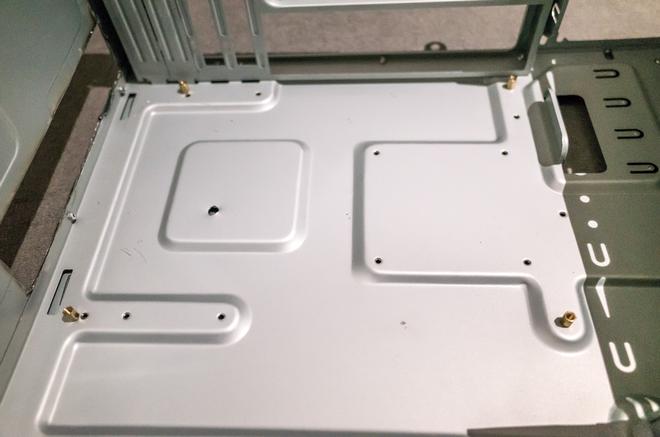
Had to drill three new holes for the mounting studs; one could be used as-is
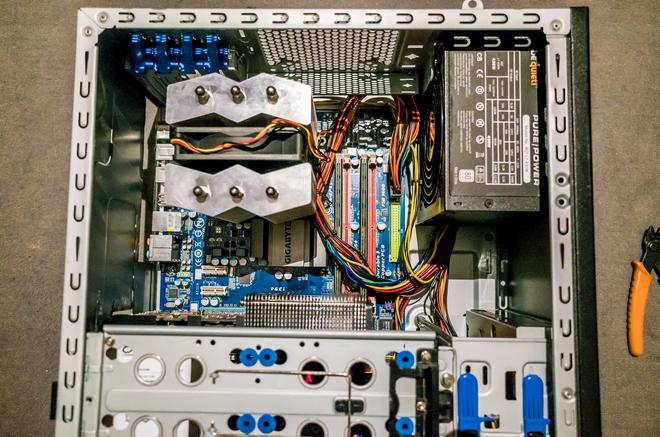
Everything's in there!
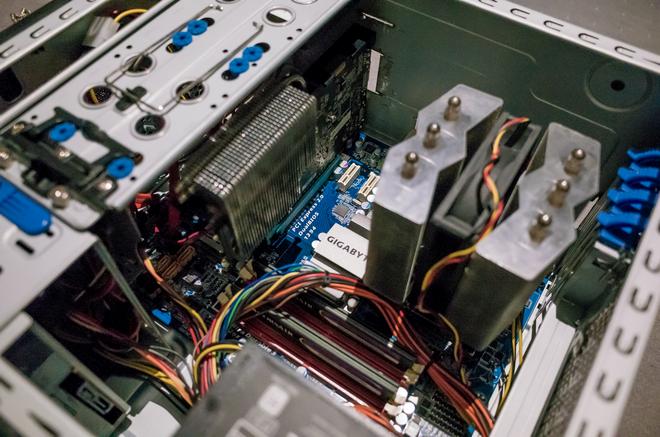
With the graphics card removed I can even mount another HDD
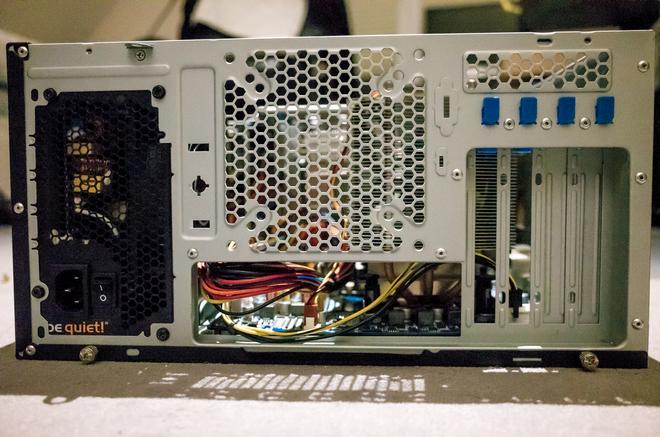
Plenty ventilation 'openings' make for an efficient exhaust
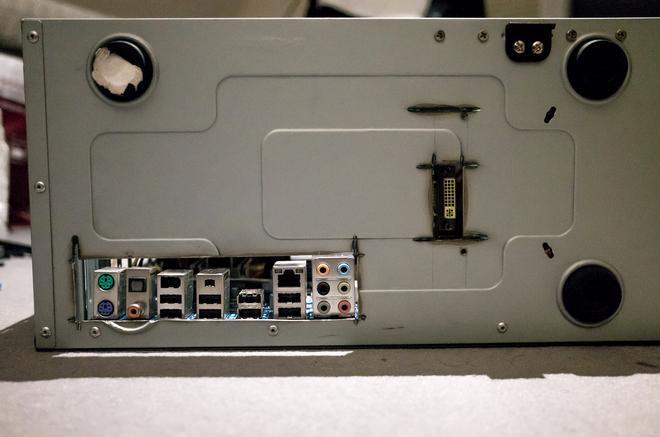
The underside is the new back side. I only had a cutting wheel for stones handy, that's why the cuts look a little rough
Now the mini tower is converted to a desktop case, as long as it is not standing upside down (from the original upside). While I was at it, I set up the system with a fresh install of Windows 7 and then went for some overclocking. Pushing the FSB from 266MHz up to 400MHz was easy, but Prime95 wasn't stable for long. Even with a Vcore of 1.360V (set to 1.3965V in BIOS), which is close to the recommended maximum of 1.3625V, the system was not stable running at 4GHz. Absolute maximum voltage is 1.45V, but I didn't want to push it further. I backed up just a little and set the multiplier from 10x to 9.5x, so I'm left with 3.8GHz running stable (TM) now, which is a whopping 42% increase over the stock 2.66GHz of this rather low-power Core2Duo E7300. Delta-T is almost 20 degrees Celsius, Prime95 is running and I'm happy :) !

Vcore and FSB a little higher than usual